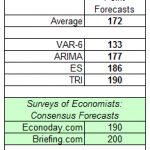
The US dollar continues to consolidate its recent strong gains. Its pullback is shallow is corrective in nature. Nothing has materialized to challenge the divergence meme. The US 2-year premium over Germany has edged higher still today. It is a little more than 122 bp and is extending its widening streak to the eighth consecutive session. Although the 10-year premium over Japan has not increased for two days, it is holding above 200 bp, a threshold it moved above at the end of last week for the first time since September 2014.
ECB’s Draghi speaks at the BOE’s Open Forum shortly (~13:15 GMT/8:15 ET). Many are looking for some fresh clues into what the ECB will do when it meets on December 3.This may be asking too much.This is not the proper forum.Draghi is more likely to simply reiterate what he said at his press conference following the late October ECB meeting.With downside risks growing, all policy options will be reviewed.A Reuters story earlier this week claimed a consensus was emerging in favor of a cut in the repo rate.This would serve two purposes.It would ostensibly ease monetary policy further, though the impact of deeper negative rates is not clear, as Europe is being a pioneer.It would also increase the universe of bonds that qualify for the program.
The main economic report from Europe today was the UK’s jobs report. After recording a three-day high in Asia near $1.5185, sterling was pulling back before the employment data. It had a knee-jerk push lower on the news but quickly stabilized. The data was mixed.The claimant count rose for the third consecutive month, but marginally.The average increase has been a little less than 1.7k.The ILO measure of unemployment unexpected slipped to 5.3% from 5.4%, a low since 2008.
The average weekly earnings, which are reported with an extra month lag, were slightly softer than expected. Overall weekly earnings averaged 3.0% as they did in August.The consensus thought the pace would tick up to 3.2%.However, excluding bonus payments, earnings growth slowed to 2.5% from 2.8%, which was a bit more than the consensus expected. It is the slowest growth this March.Recall that in the BOE’s recent Quarterly Inflation Report is anticipated slower rate growth in Q4to 2.5% from 3.0% in August, though it kept the Q4 2016 estimate unchanged at 3.75%.














Leave A Comment